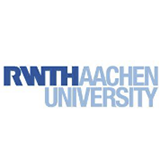Detailed introduction of RWTH Aachen University:
Introduction
RWTH Aachen University (German: rheinisch-westfälische technische hochschule aachen, English: RWTH Aachen University), founded in 1870, is located in Aachen, Germany. It is one of the most prestigious universities of science and engineering in Europe. Together with the Technical University of Munich, it is known as the "German Engineering Twins" and is known as the "MIT" of Europe.
Overview
Student size: In the winter semester of 2020/2021, a total of 47,173 students were enrolled in 166 courses, including more than 12,000 international students from more than 120 countries. In 2024, the number of students enrolled in the university will reach more than 45,000.
Number of faculty and staff: more than 10,000 staff, including about 1,900 scientific and technological staff, 6,000 non-scientific and technological staff, about 1,000 interns or trainees and 1,500 intermediate workers.
History
Founding background: In the 1870s, Germany was in the early stages of industrialization, and the demand for engineering, scientific and technical talents continued to increase. Against this background, the German government decided to establish a university in Aachen to train engineers and technical professionals to meet the needs of rapid industrial development.
Important development stages: The school officially opened on October 10, 1870, with only 223 students and 32 teachers. In 1900, each department obtained the right to confer doctoral degrees, and the technical school was renamed the RWTH Aachen University of North Rhine-Westphalia. The school was affected to varying degrees during the two world wars and was briefly closed in 1939. In the following decades, RWTH Aachen University has developed steadily and added departments such as philosophy, medicine, and education. Its reputation has been significantly improved both domestically and internationally.
Founded in 1870.
School Strength
Disciplines and majors: The university has a wide range of disciplines, covering natural sciences, computer science, engineering, economics, medicine, architecture, philosophy and many other fields. It has nine colleges, including the School of Mathematics-Information-Natural Sciences, the School of Architecture, the School of Civil Engineering, the School of Mechanical Engineering, the School of Geological Resources and Materials Engineering, the School of Electrical Engineering and Information Technology, the School of Arts, the School of Economics, and the School of Medicine, offering more than 100 majors.
Scientific research results: The university has strong scientific research strength. As of 2024, a total of 6 people have won the Nobel Prize, and many outstanding alumni have been born, such as Theodore von Karman, the mentor of Qian Xuesen, Lu Yongxiang, the former president of the Chinese Academy of Sciences, and Wang Dazhong, the president of Tsinghua University. Remarkable scientific research results have been achieved in many disciplines such as engineering technology and natural sciences. For example, the Machine Tool Laboratory is the world's largest mechanical research institute, and the works of its four professors have become standard compulsory textbooks for the mechanical departments of German universities; the Internal Combustion Engine Research Institute has the world's top level of internal combustion engine research.
Institutional Nature
German public university.
Educational Philosophy
Teaching is application-oriented, focusing on cultivating students' ability to solve practical problems, enabling students to quickly adapt to the work needs of enterprises and industries after graduation, and to play important roles such as junior managers and leaders. At the same time, it emphasizes interdisciplinary comprehensive education, promotes the cross-integration of different disciplines, and cultivates students' innovative thinking and comprehensive literacy.
Key laboratories and disciplines
Key laboratories:
Machine Tool Laboratory (Laboratorium fuer Werkzeugmaschine und Betriebslehre, abbreviated as WZL): It is one of the world's largest mechanical research institutes. Its main research directions include production measurement technology and quality management, production systems, manufacturing process technology, machine tools, etc. Its four professors are all industry leaders, and their works have become standard compulsory textbooks for the mechanical departments of German universities. It also maintains partnerships with international industrial companies such as Bosch, Audi, and Daimler AG.
European Mechatronics Research Center: Conducting cutting-edge research in the field of mechatronics, promoting the integration and development of disciplines such as mechanical engineering and electronic engineering, and providing important support for technological innovation and industrial upgrading in related fields.
Fraunhofer Institute for Processing Research and Fraunhofer Institute for Laser Research: Focusing on the research and application of processing technology and laser technology, working closely with the industry to transform scientific research results into actual productivity, and promoting the development of Germany's manufacturing industry.
Communication Network Institute and Radio Institute: With profound research accumulation in the field of communication technology, they have made important contributions to major projects such as the design and construction of the German high-speed train IntercityExpress (ICE). Their research results have played a key role in improving the level of German communication infrastructure and promoting innovation in communication technology.
Key disciplines: Mechanical manufacturing, computer, electrical engineering, material processing, metallurgical engineering and other science and engineering disciplines are strong and are in a leading position in Germany and even in the world. In addition, interdisciplinary subjects integrating biology, chemistry and medicine are also booming, and subjects such as computer science, architecture, and physics are also ranked among the top three in the German university rankings.
Faculty
The school currently has nine colleges: the School of Mathematics-Information-Natural Sciences, the School of Architecture, the School of Civil Engineering, the School of Mechanical Engineering, the School of Geological Resources and Materials Engineering, the School of Electrical Engineering and Information Technology, the School of Arts, the School of Economics, and the School of Medicine.
Ranking
90th in the 2024 Times Higher Education World University Rankings.
106th in the 2024 QS World University Rankings.
32nd in the 2023 Times Higher Education World University Rankings for Engineering.
55th in the 2022 QS World University Rankings for Engineering and Technology.
Expenses
Tuition: Usually no tuition, but tuition and miscellaneous fees of about 300-500 euros per semester are required.
Living expenses: about 800-1,000 per month Euros, including accommodation, food, transportation and other expenses.
Campus
Campus distribution: The main campus is located in Aachen, and some professional teaching and research facilities are distributed in different areas, such as the Department of Biology and Medicine in the Melaten district, and computer engineering and other majors in the Hoern district. In addition, there are stations in Jülich, Essen, Stuttgart University, Austria, etc., and there are water sports venues in Wildenhof in the Eifel.
Campus environment: Aachen is a city with a long history and rich culture. The campus of RWTH Aachen University has diverse architectural styles, integrating traditional and modern elements. The campus is shaded by trees and has a beautiful environment, providing students with a good learning and living atmosphere.
Teaching facilities: The school has complete teaching facilities, including a large computer center and a library with more than 1 million books, which provide strong support for students' learning and research.
-
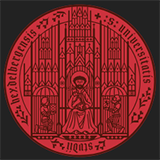
Heidelberg University
-
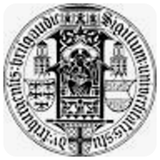
University of Freiburg
-
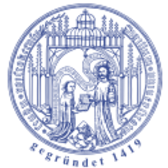
University of Rostock
-
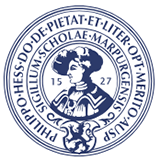
University of Marburg
-
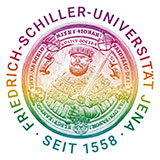
University of Jena
-
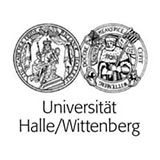
University of Halle-Wittenberg
-
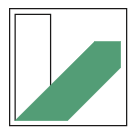
University of Bayreuth
-

Leipzig University
-
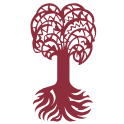
University of Tübingen
-
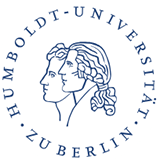
Humboldt University of Berlin
-

Mesoamerican University
-

Istmo University
-

Mariano Galvez University of Guatemala
-

Regional University of Guatemala
-

Galileo University
-

Francisco Marroquín University
-

Rafael Landívar University
-

University of the Valley of Guatemala
-

University of San Carlos of Guatemala
-

Technological Institute of Tlaxcala Plateau
-

Golfo University
-

Technological University of South Sonora
-

Technological University of Huejotzingo
-

Tizimín Institute of Technology
-

Chilpancingo Institute of Technology

